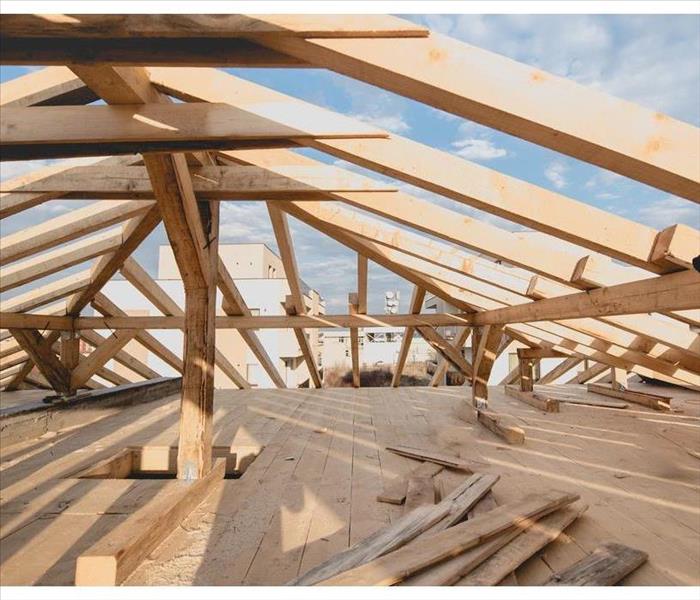How To Keep Moisture Out of Your Building
8/26/2019 (Permalink)
How To Keep Moisture Out of Your Building
Having moisture build up in a commercial building in Billings, MT, especially those that are frequented by many people, can cause costly and devastating damage over time, as well as poor air quality. Black mold can easily start growing in areas with constant moisture and leaking water, and if this type of problem is left for too long, you may be required to shut down parts of the building, or the whole thing, for water damage renovations.
To avoid these issues altogether, a tight building envelope is an incredible defensive solution to ensuring a long lifespan for your building. This includes a quality roof and well-maintained above-grade and below-grade walls.
Solid Building Envelope
Your building should be built, or renovated, with a few different layers to ensure a successful moisture barrier to avoid rain damage. The envelope also serves to protect equipment, efficiently heat and cool the building, divert excess water to storm drainage systems, and protect the building from all other types of weather and moisture including snow, ice, and hail.
Air barrier: Controls air movement to prevent unnecessary heating and cooling costs.
Vapor barrier: Prevents moisture diffusion.
Thermal barrier: Provides insulation.
Drainage plan: Manages water infiltration and flow around the building.
If you have capillary movement, you can install a capillary break made of impermeable material. Utilizing rain screens and back-up systems can also be helpful.
Causes of Vapor Penetration
There are a few conditions which must exist for there to be a problem with your current building envelope, now or during the next storm. This includes a presence of water, any forces that can draw water into the building such as pressure, wind, capillary forces, or gravity, and of course cracks or gaps in walls, windows, and doors. Installation errors, even minor ones, can also lead to major rain damage.
If you have a moisture problem or are expecting rain damage from the next big storm, there are things you can do to the landscape outside such as creating sloping surfaces or better drainage around the building, installing better gutters, or overhangs. Of course, if the building was built well to begin with, keeping up with general maintenance over time can be the best and most cost-effective option.




 24/7 Emergency Service
24/7 Emergency Service
